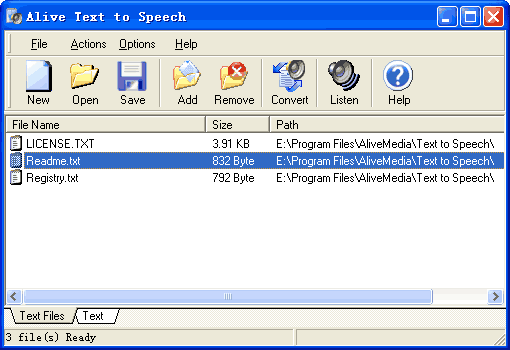Alive Text to Speech is a text-to-speech software to read text in any application, and convert text to MP3, WAV, OGG or VOX files.
Alive Text to Speech also enables you to listen documents, emails, news articles or web pages without conversion. It supports schedule converting. It also allow advanced users to finish the conversion of text to mp3 with Command lines. You can change the different voices and the readout speed for conversion or listening, and download more voices from Internet.
Key Features:
1) Read text in any application, including Emails, web pages, news articles, PDF, Word or Excel Documents, etc.
2) Convert text to MP3, WAV, OGG, VOX files.
3) Convert text Files to MP3, WAV, OGG, VOX files.
4) Install Alive Text to Speech Toolbar in IE (Internet Explorer) Browser.
5) It is very simple and easy to use. Just right click on files in the Windows Explorer, select "Convert to MP3"(or WAV, OGG,VOX) and convert them using your predefined settings.
6) Command line supported.
7) Converting text to mp3 in batches.
8) Schedule converting support.
9) Microsoft text-to-speech engine.
10) High converting speed, wonderful output quality.
11) Windows Vista compatible

Site: http://www.alivemedia.net/textspeech.htm

